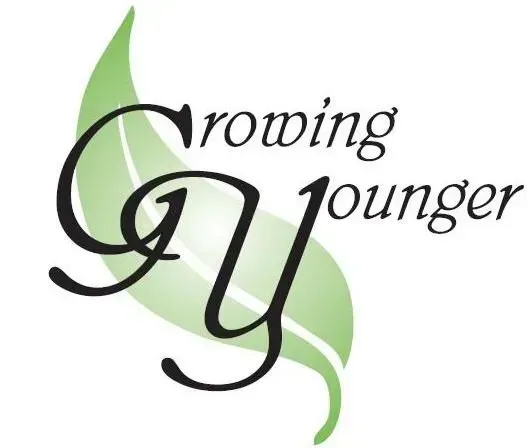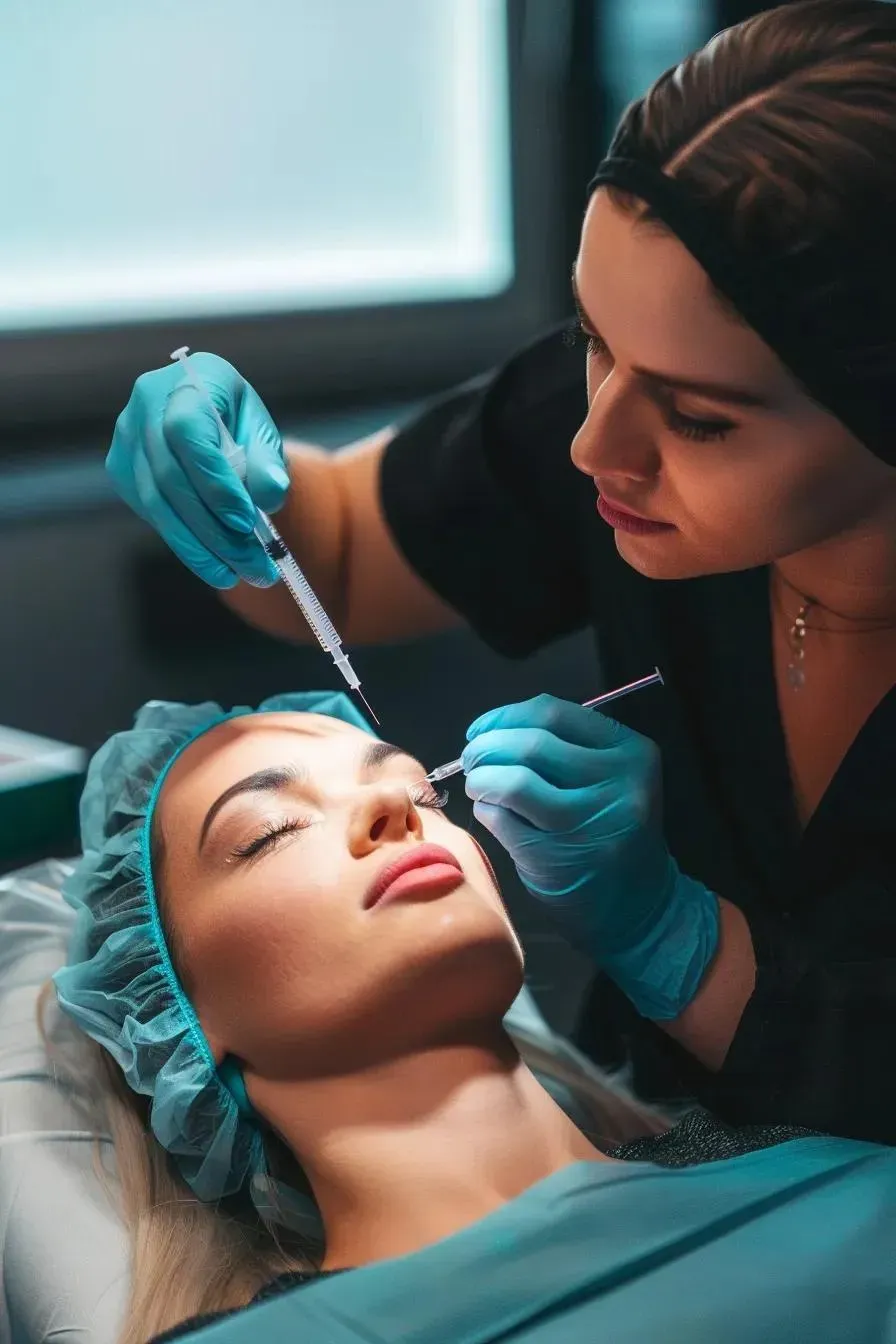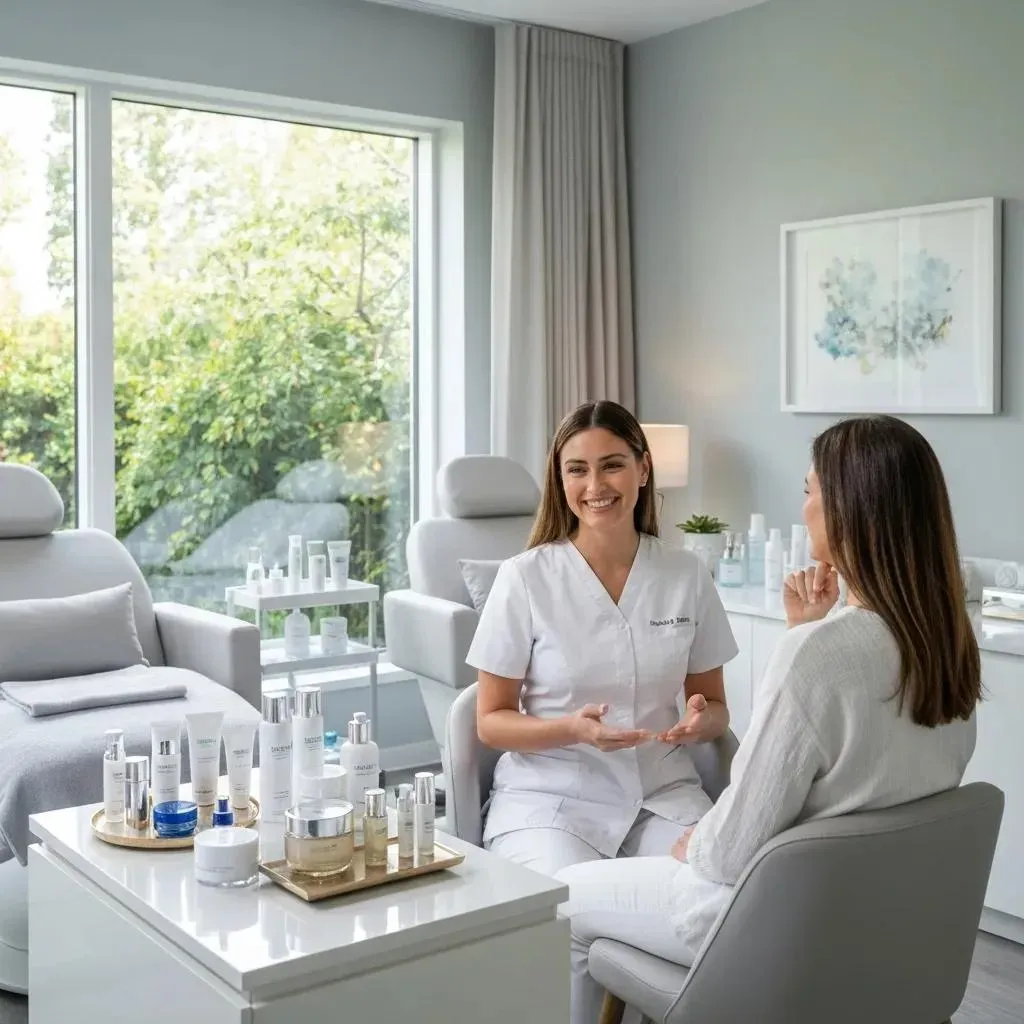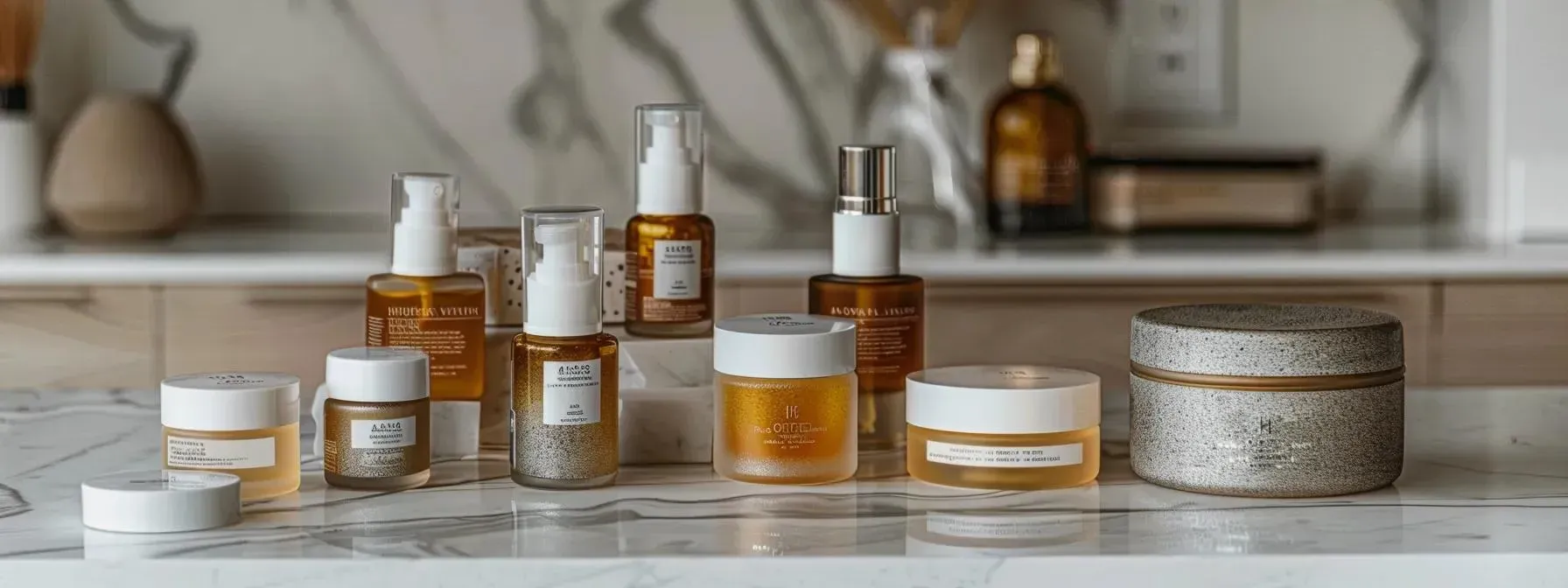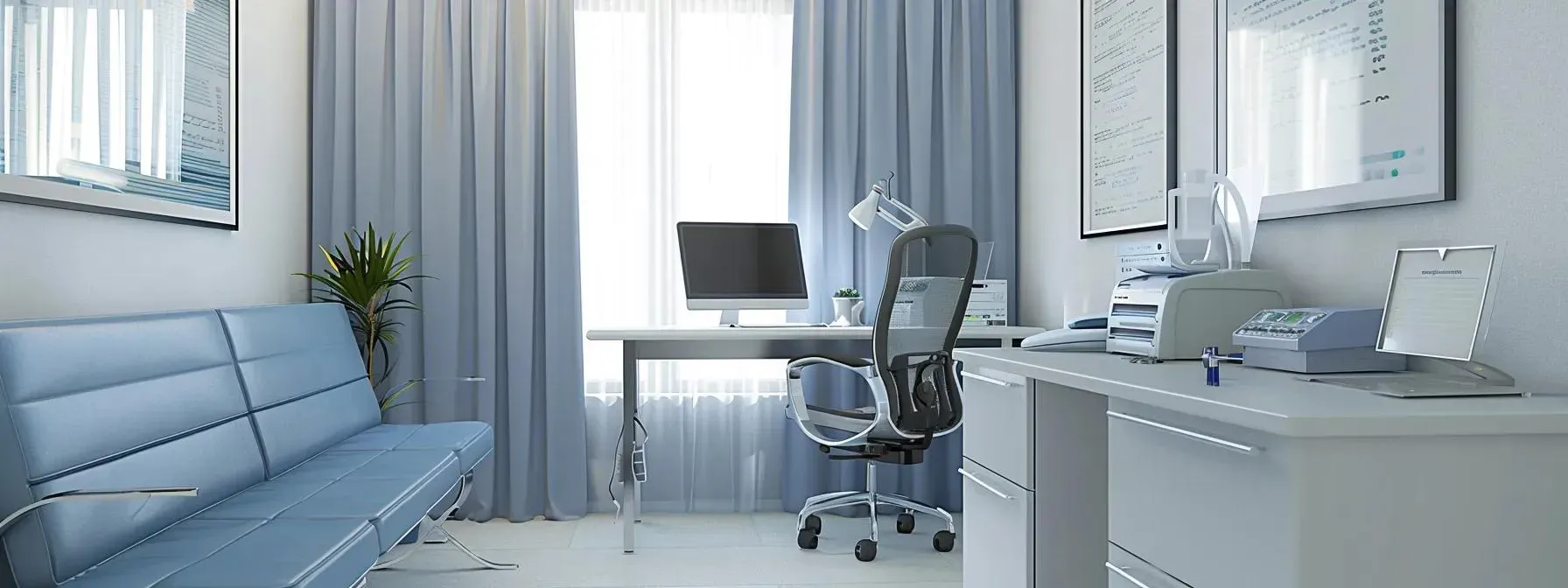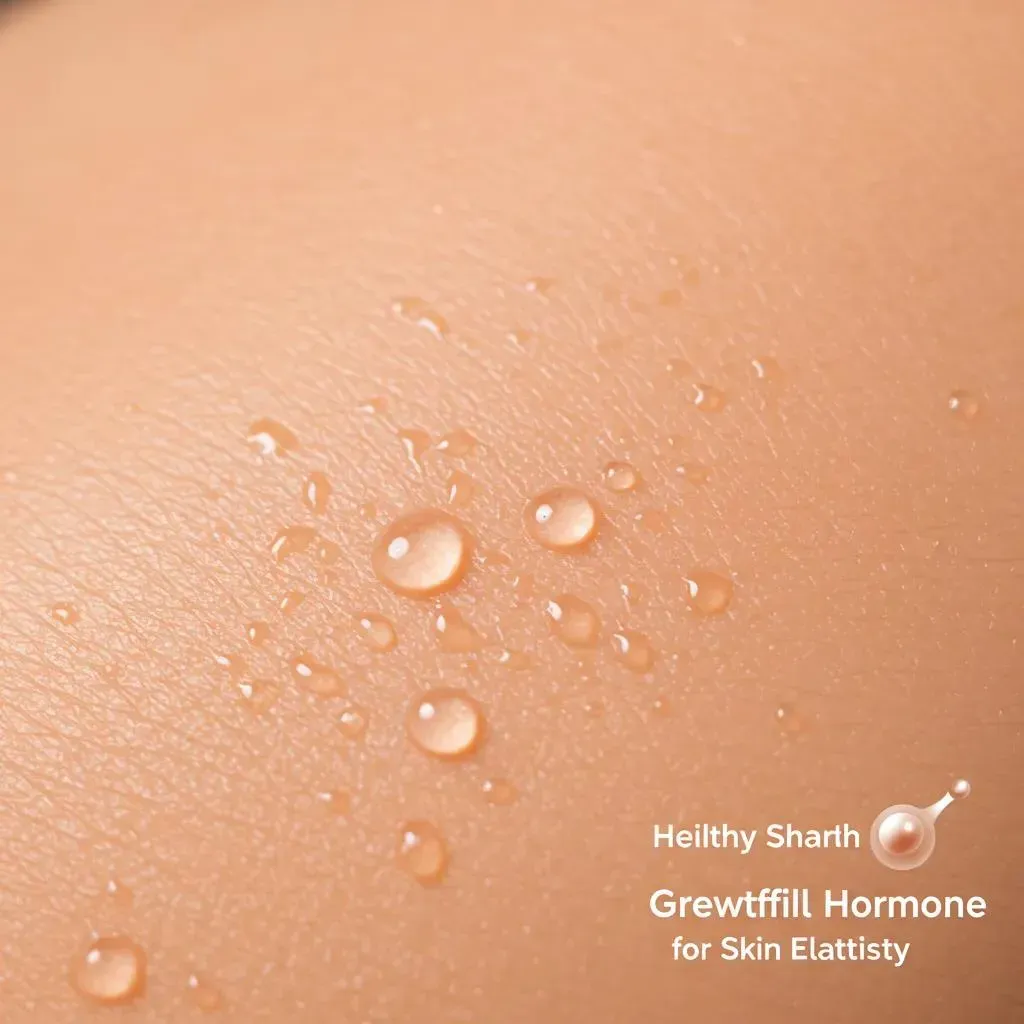Age-Defying Workouts to Elevate Your Longevity: Science-Backed Routines for a Fuller Life
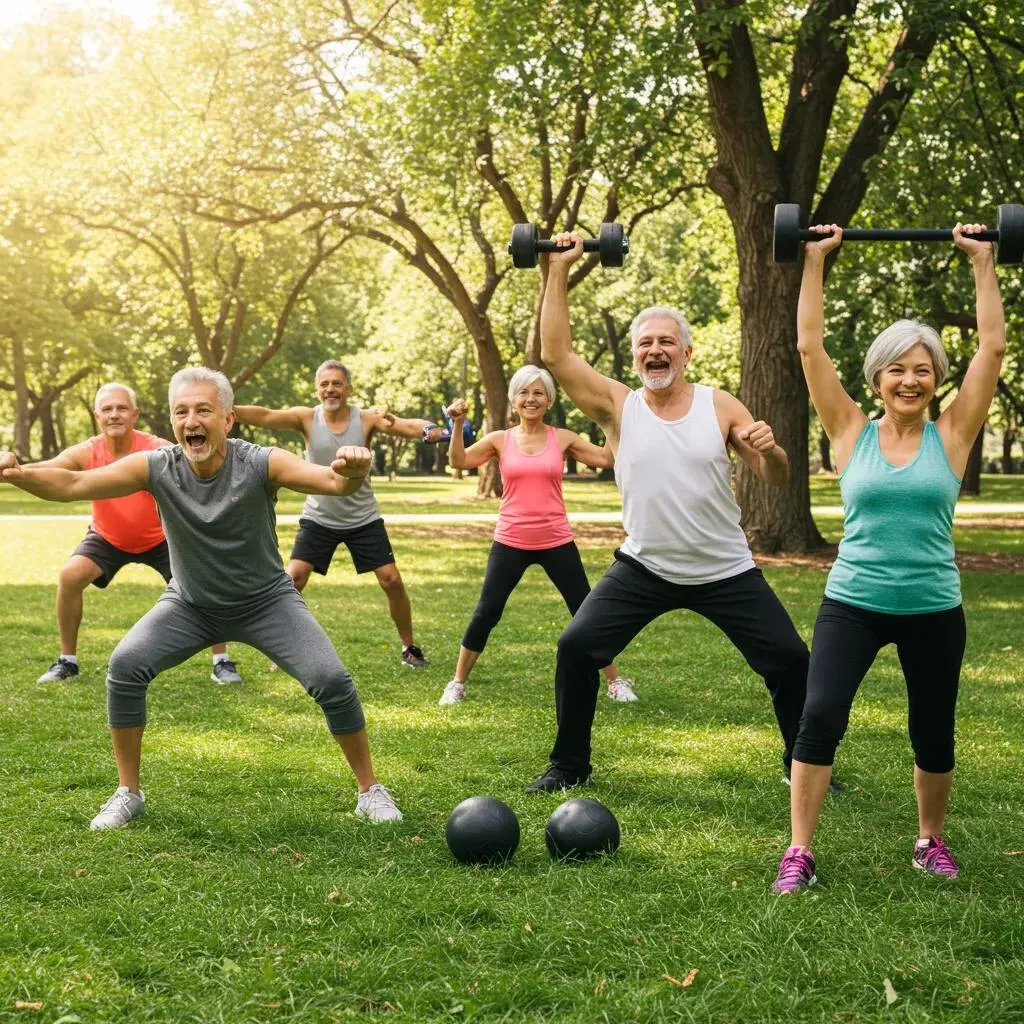
Discover how tailored exercise regimens can decelerate biological aging, fortify your muscles and bones, and champion heart health, ultimately extending your healthspan. By engaging cellular mechanisms like telomere preservation and mitochondrial biogenesis, you’ll explore science-backed strength, cardiovascular, flexibility, and balance workouts specifically designed for adults over 35. This guide also illuminates how exercise harmonizes with optimal nutrition, effective stress management, and rejuvenating skin treatments—plus how the Growing Younger Clinic in Madison, AL can be your partner in a comprehensive anti-aging journey.
What’s the Science Behind Exercise and Staying Youthful?
Exercise stands as a potent intervention, effectively slowing biological aging by safeguarding cellular structures, enhancing tissue vitality, and curbing inflammation. Through intricate molecular pathways involving telomeres and mitochondria, it actively combats age-related muscle depletion and bone fragility while bolstering cardiovascular resilience. Grasping these fundamental mechanisms illuminates why incorporating strength, aerobic, flexibility, and balance routines is paramount for any longevity-focused plan.
How Does Exercise Slow Cellular Aging Through Telomeres and Mitochondria?
Exercise helps preserve telomere length by boosting telomerase activity, which acts as a protective shield for chromosome ends against degradation. Simultaneously, physical activity stimulates mitochondrial biogenesis within muscle cells, leading to increased ATP production and a reduction in damaging reactive oxygen species.
Before we delve into specific routines, consider this concise overview of cellular anti-aging pathways:
| Cellular Mechanism | Exercise Effect | Longevity Benefit |
|---|---|---|
| Telomerase Activation | Enhances telomere length | Slows cellular senescence |
| Mitochondrial Biogenesis | Increases mitochondrial density | Boosts energy metabolism |
| Antioxidant Response | Reduces oxidative stress | Protects DNA and proteins |
Exercise, Telomere Length, and Mitochondrial Biogenesis
A recent umbrella review and meta-analysis indicated that physical exercise positively influences telomere length, with high-intensity interval training (HIIT) demonstrating moderate benefits. Complementary research shows that sprint-interval exercise significantly increases PGC-1α protein content in human skeletal muscle, a critical regulator involved in mitochondrial biogenesis, which enhances cellular energy production and resilience.
This research provides robust scientific validation for the article's explanation of how exercise, particularly HIIT, contributes to slowing cellular aging by supporting telomere preservation and stimulating mitochondrial biogenesis.
How Does Strength Training Combat Sarcopenia and Osteoporosis?
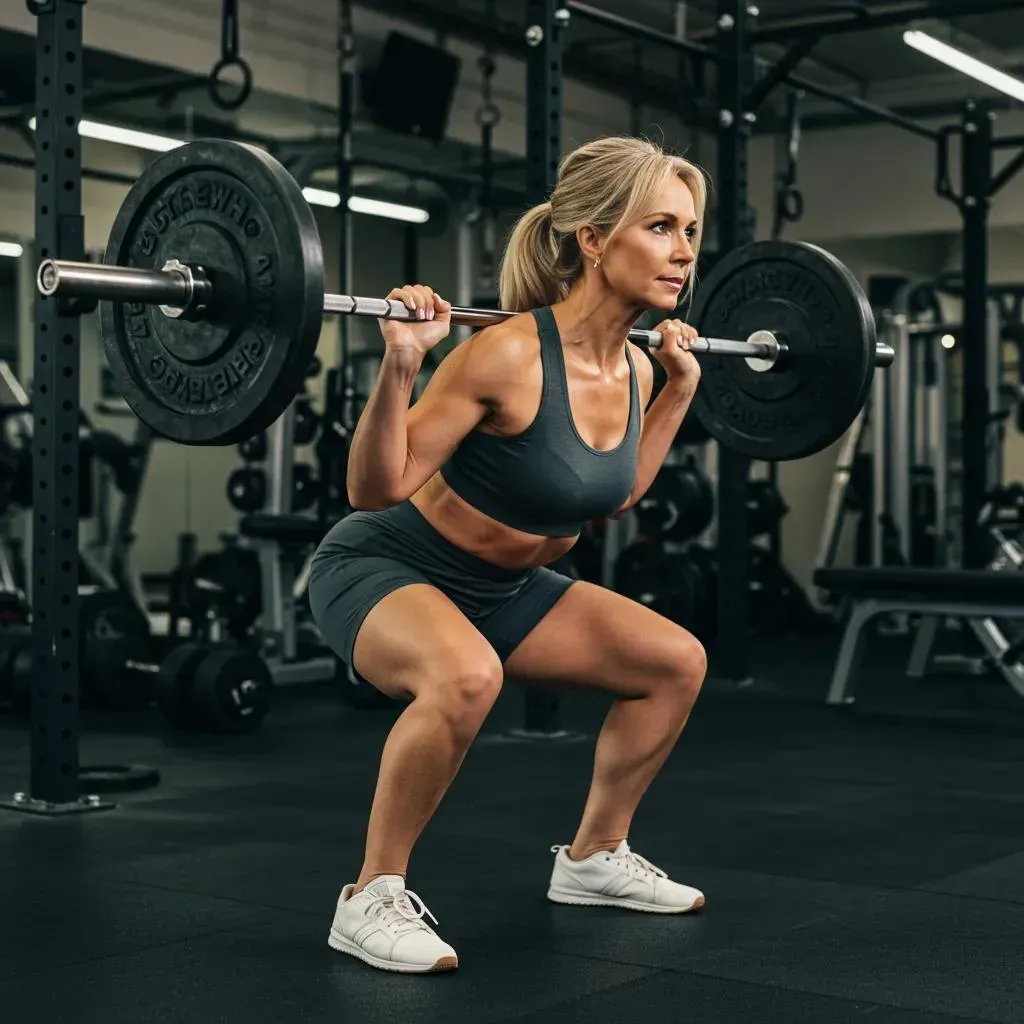
Strength training is instrumental in building and maintaining muscle mass by stimulating muscle protein synthesis and activating crucial satellite cells. Furthermore, resistance exercises place beneficial stress on bones, prompting osteoblast activity that enhances bone mineral density.
- Elevated muscle mass and functional strength
- Increased bone density, offering protection against osteoporosis
- Boosted metabolic rate, aiding in effective weight management
Resistance Exercise for Sarcopenia and Osteoporosis
Exercise training, particularly progressive resistance exercise, is identified as a promising therapeutic strategy to combat osteosarcopenia, a condition characterized by the concurrent loss of muscle mass (sarcopenia) and bone mineral density (osteoporosis). This intervention is crucial for maintaining and increasing both muscle mass and bone density, thereby reducing the risk of falls and fractures in aging populations.
This citation powerfully supports the article's assertions regarding the effectiveness of strength training in counteracting sarcopenia and osteoporosis, underscoring its vital role in preserving youthful muscle and bone vitality.
A strategically designed approach to resistance training directly combats sarcopenia and brittle bones, ensuring you remain robust and active throughout your life.
Why Is Cardiovascular Exercise Essential for Longevity and Heart Health?
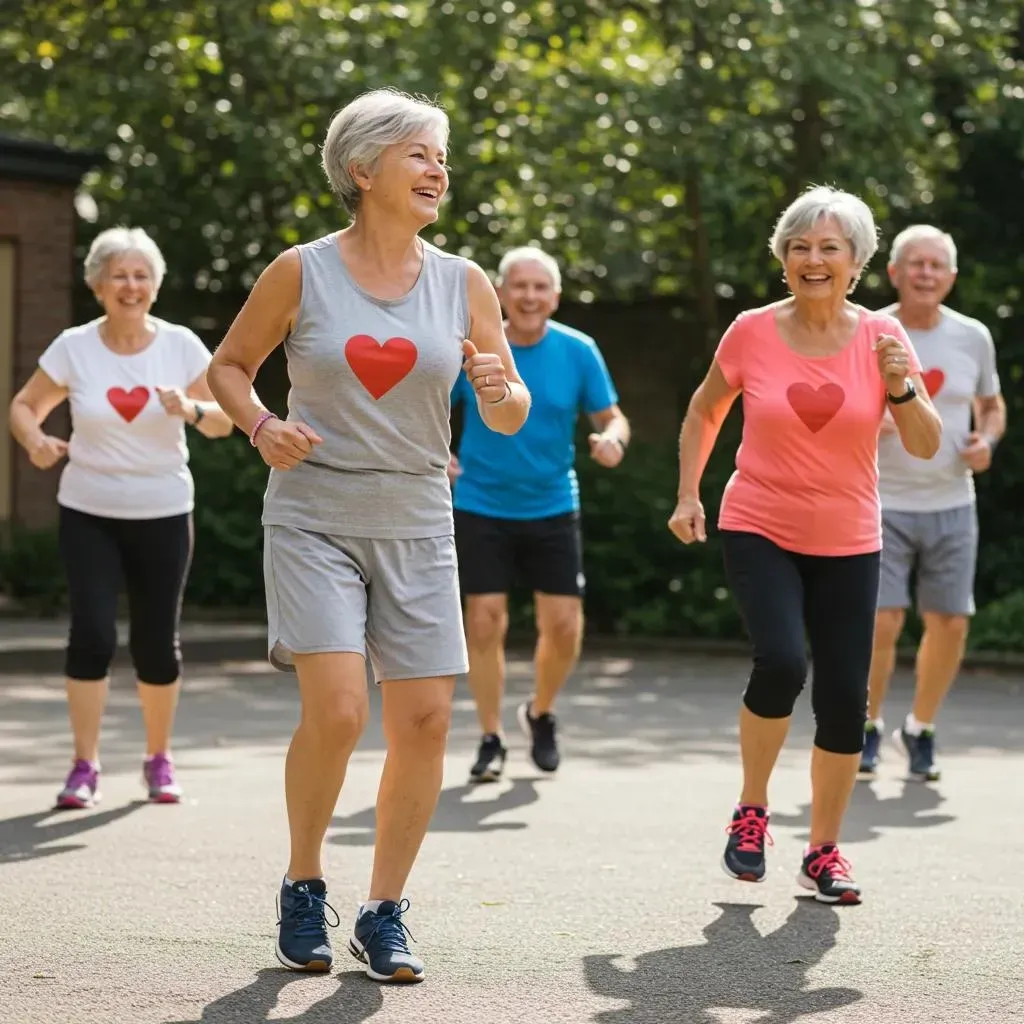
Cardiovascular exercise elevates your heart rate, leading to improvements in stroke volume, a reduction in resting blood pressure, and an increase in VO₂ max. Enhanced circulation ensures more efficient delivery of oxygen and vital nutrients to every tissue, from your brain to your skin.
Key aerobic advantages include:
- Heart Efficiency – A larger, stronger heart muscle reduces overall cardiac workload
- Vascular Function – Improved endothelial health leads to decreased arterial stiffness
- Brain Support – Enhanced cerebral blood flow promotes cognitive longevity
Aerobic routines are the cornerstone of a longevity strategy, safeguarding cardiovascular integrity and fostering systemic resilience.
Exercise and Cardiovascular Longevity
A comprehensive meta-analysis involving over 20 million observations revealed that consistent aerobic exercise significantly lowers the risk of all-cause mortality and cardiovascular disease. The study found that for every additional 1-MET (metabolic equivalent of task) of aerobic exercise, the risk of all-cause death decreased by 11% to 17%, and the risk of heart failure was reduced by up to 18%.
This research directly substantiates the article's emphasis on cardiovascular exercise as a fundamental element for extending longevity and maintaining optimal heart health.
What Are the Premier Anti-Aging Exercise Routines to Elevate Longevity?
An ideal anti-aging fitness regimen artfully combines progressive strength training, diverse cardiovascular sessions, and targeted flexibility and balance exercises. This powerful triad addresses muscle preservation, heart health, and mobility, thereby reducing injury risk and enhancing everyday functionality.
Which Strength Training Exercises Best Promote Youthful Muscle and Bone Function?
The most effective resistance exercises are compound movements that engage multiple muscle groups and place beneficial load on the skeleton.
Begin each session with a thorough warm-up, then proceed with:
- Squats to strengthen quadriceps, glutes, and enhance hip stability
- Deadlifts to build posterior chain strength and support the spine
- Push-Ups to develop upper-body and core power
- Bent-Over Rows to foster back and shoulder resilience
- Lunges to improve balance and unilateral strength
Conclude each routine with progressive overload—gradually increasing the weight or repetitions—to ensure continuous gains in muscle mass and bone density.
Here is a sample weekly resistance plan:
| Day | Exercise Focus | Sets × Reps | Rest Between Sets |
|---|---|---|---|
| Monday | Lower Body | 3×10–12 (Squat, Lunge) | 60 seconds |
| Wednesday | Upper Body | 3×8–10 (Push-Up, Row) | 60 seconds |
| Friday | Full Body | 2×12–15 (Deadlift, Press) | 90 seconds |
What Cardiovascular Workouts Support Healthy Aging and Brain Function?
A strategic blend of moderate-intensity steady-state (MISS) and high-intensity interval training (HIIT) maximizes cardiovascular benefits and neuroprotective effects.
Effective cardio options include:
- Brisk Walking or Cycling for low-impact endurance
- Swimming to reduce joint stress while enhancing circulation
- HIIT Sprints (e.g., 30 sec all-out effort, 90 sec recovery walk) to significantly boost VO₂ max
Incorporate two to three MISS sessions (30–45 min each) and one HIIT session weekly to optimize heart health, mitochondrial function, and the production of brain-derived neurotrophic factor (BDNF).
HIIT delivers rapid mitochondrial adaptations and cellular repair signaling that beautifully complement longer aerobic workouts.
How Do Flexibility and Balance Exercises Prevent Falls and Maintain Mobility?
Practices like Yoga, Tai Chi, and dynamic stretching routines are essential for restoring joint range of motion, strengthening stabilizing muscles, and refining proprioception.
Key movements include:
- Downward Dog and Cat-Cow stretches to enhance spinal and shoulder mobility
- Tree Pose and Single-Leg Stance to sharpen balance and coordination
- Hip Openers and Ankle Circles to improve lower-limb flexibility
Consistent practice significantly enhances neuromuscular coordination and reduces the risk of falls, thereby preserving functional independence and overall quality of life.
How Can You Design a Personalized Longevity Exercise Plan?
Customizing your routine is key to ensuring safety, enjoyment, and long-term adherence. A plan meticulously tailored to your age, current fitness level, and health history will maximize your results while minimizing the risk of injury.
What Factors Should You Consider When Crafting Your Anti-Aging Workout?
Personalization hinges on several critical factors:
- Age and Goals – Adjust intensity and volume to match your current conditioning
- Medical History – Carefully consider any joint issues, cardiovascular status, or chronic conditions
- Schedule and Recovery – Achieve a balance between workouts, adequate rest, sleep, and stress management
- Progress Tracking – Diligently log your weights, durations, and functional milestones
Thoughtfully integrating these factors creates a sustainable program that gracefully evolves alongside your progress.
How Can Growing Younger Clinic Support Your Exercise and Wellness Aspirations?
The Growing Younger Clinic offers complimentary consultations to seamlessly integrate exercise with our specialized services, including medical weight loss, hormone balance, and aesthetic treatments. By combining your personalized workout plan with targeted services—such as dermal fillers, Plasma Lift, or a HydraFacial—you can significantly enhance skin health, optimize metabolic function, and boost overall vitality. Reach out to us today to schedule a personalized wellness assessment and embark on a holistic anti-aging strategy.
How Does Exercise Complement Other Anti-Aging Strategies?
Exercise works synergistically with optimal nutrition, restorative lifestyle habits, and advanced skin treatments to amplify anti-aging results. A truly holistic approach addresses both internal physiology and external appearance in perfect concert.
What Role Does Nutrition Play Alongside Exercise for Healthy Aging?
Balanced nutrition provides the essential building blocks for tissue repair and robust metabolic health. Prioritize these key components:
- Lean Proteins to effectively support muscle synthesis
- Antioxidant-Rich Produce to combat cellular oxidative stress
- Healthy Fats (especially omega-3s) to help modulate inflammation
- Complex Carbohydrates for sustained energy release
A diet meticulously aligned with your exercise regimen will accelerate recovery, optimize body composition, and maintain peak cellular function.
How Do Sleep, Hydration, and Stress Management Enhance Exercise Benefits?
Quality sleep is crucial for facilitating muscle repair and maintaining hormonal balance, while adequate hydration ensures efficient nutrient transport throughout the body. Mind-body practices, such as meditation and focused breathing exercises, effectively lower cortisol levels, thereby preserving muscle tissue and cognitive function. Together, these foundational pillars significantly bolster workout adaptation and promote longevity.
How Does Physical Activity Improve Skin Health and Support Medical Spa Treatments?
Increased circulation resulting from regular exercise delivers vital oxygen and nutrients directly to the dermis, stimulating collagen production and enhancing the efficacy of treatment outcomes. Improved lymphatic flow aids in detoxification, reducing puffiness and promoting a clearer complexion. Pairing your workouts with professional skin rejuvenation treatments—such as the HydraFacial or Plasma Lift—helps prolong results and cultivates a luminous, youthful complexion.
How Much Exercise Is Recommended for Longevity and Anti-Aging?
Consistent physical activity that aligns with CDC and AHA guidelines delivers measurable longevity benefits. Meeting these recommended thresholds can reduce mortality risk by approximately one-third and foster sustainable improvements in your healthspan.
What Are the Weekly Aerobic and Strength Training Guidelines for Adults Over 35?
Recommended activity levels include:
- Aerobic: Aim for 150–300 minutes of moderate-intensity activity or 75–150 minutes of vigorous-intensity activity per week
- Strength: Engage in two or more sessions weekly that target all major muscle groups
Consistently meeting these recommendations is key to maintaining cardiovascular resilience, preserving muscle mass, and supporting metabolic health.
How Does Consistency in Exercise Impact Longevity Outcomes?
Long-term adherence to an exercise program amplifies its cumulative effects on telomere preservation, mitochondrial efficiency, and overall functional capacity. Each additional year of consistent exercise is correlated with a reduced risk of all-cause mortality, powerfully reinforcing the profound value of lifelong physical activity.
What Are the Unique Benefits of Different Exercise Types for Longevity?
Incorporating a variety of exercise modalities targets specific anti-aging pathways, making a diverse fitness program essential for comprehensive healthspan extension.
How Does HIIT Enhance Mitochondrial Function and Cellular Repair?
High-intensity intervals effectively activate AMPK and PGC-1α signaling pathways, driving mitochondrial proliferation and autophagy. This process optimizes energy turnover and clears damaged cellular components, fostering greater resilience against age-related decline.
Why Is Yoga and Tai Chi Important for Mind-Body Longevity?
Mind-body practices significantly enhance neural plasticity, reduce stress hormones, and promote a balanced autonomic nervous system. By integrating gentle strength, flexibility, and mindful breathing techniques, they profoundly support musculoskeletal health and cognitive clarity.
How Does Walking Support Cardiovascular Health and Longevity?
Brisk walking actively boosts endothelial function, helps maintain healthy blood pressure levels, and places minimal load on the joints. As an accessible activity, it encourages lifelong adherence and delivers consistent improvements in heart health and metabolic regulation.
What Are Common Questions About Anti-Aging Exercise Routines?
This section provides clear, concise, and actionable insights to address your core concerns, guiding you effectively on your anti-aging fitness journey.
What Is the Best Exercise for Anti-Aging and Longevity?
The optimal anti-aging program is a synergistic blend of resistance training for muscle and bone health, aerobic exercise for cardiovascular and mitochondrial vitality, and flexibility/balance work to preserve mobility. This comprehensive triad targets the essential cellular, cardiovascular, and neuromuscular pathways crucial for an extended healthspan.
Can Exercise Reverse or Slow Down the Aging Process?
Absolutely. Regular physical activity demonstrably slows aging by preserving telomere length, enhancing mitochondrial density, reducing inflammation, and stimulating growth factors that maintain tissue integrity. While it cannot stop the passage of time, it significantly delays age-related decline.
How Do Strength Training and Cardio Work Together for Healthy Aging?
Strength training is vital for maintaining muscle mass and bone density, while cardiovascular exercise excels at improving heart and metabolic function. Together, they enhance insulin sensitivity, support a healthy body composition, and foster overall systemic resilience.
How Can Older Adults Safely Start an Anti-Aging Exercise Program?
Begin with low-impact activities—such as walking, bodyweight strength exercises, and gentle stretching—while gradually increasing intensity, ideally under professional guidance. Consulting with both medical and fitness experts ensures personalized modifications that minimize injury risk and maximize benefits.
Integrating these powerful exercise routines with supportive nutrition, restorative lifestyle habits, and advanced professional skin-rejuvenation services positions you for a truly comprehensive longevity strategy. Schedule a complimentary consultation at the Growing Younger Clinic to craft a personalized plan that harmonizes medical spa expertise with evidence-based fitness for enduring vitality.
